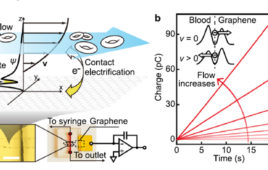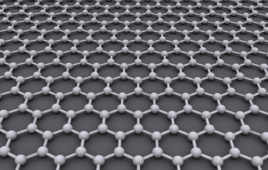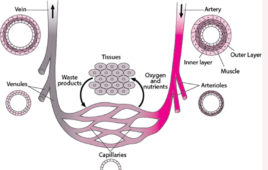 One of the barriers to using graphene at a commercial scale could be overcome using a method demonstrated by researchers at the Department of Energy’s Oak Ridge National Laboratory.
One of the barriers to using graphene at a commercial scale could be overcome using a method demonstrated by researchers at the Department of Energy’s Oak Ridge National Laboratory.
Graphene, a material stronger and stiffer than carbon fiber, has enormous commercial potential but has been impractical to employ on a large scale, with researchers limited to using small flakes of the material.
Now, using chemical vapor deposition, a team led by ORNL’s Ivan Vlassiouk has fabricated polymer composites containing 2-inch-by-2-inch sheets of the one-atom thick hexagonally arranged carbon atoms.
The findings, reported in the journal Applied Materials & Interfaces, could help usher in a new era in flexible electronics and change the way this reinforcing material is viewed and ultimately used.
“Before our work, superb mechanical properties of graphene were shown at a micro scale,” says Vlassiouk, a member of ORNL’s Energy and Transportation Science Division. “We have extended this to a larger scale, which considerably extends the potential applications and market for graphene.”
While most approaches for polymer nanocomposition construction employ tiny flakes of graphene or other carbon nanomaterials that are difficult to disperse in the polymer, Vlassiouk’s team used larger sheets of graphene. This eliminates the flake dispersion and agglomeration problems and allows the material to better conduct electricity with less actual graphene in the polymer.
“In our case, we were able to use chemical vapor deposition to make a nanocomposite laminate that is electrically conductive with graphene loading that is 50 times less compared to current state-of-the-art samples,” Vlassiouk says. This is a key to making the material competitive on the market.
If Vlassiouk and his team can reduce the cost and demonstrate scalability, researchers envision graphene being used in aerospace (structural monitoring, flame-retardants, anti-icing, conductive), the automotive sector (catalysts, wear-resistant coatings), structural applications (self-cleaning coatings, temperature control materials), electronics (displays, printed electronics, thermal management), energy (photovoltaics, filtration, energy storage) and manufacturing (catalysts, barrier coatings, filtration).
Co-authors of the paper, titled “Strong and Electrically Conductive Graphene Based Composite Fibers and Laminates,” are Georgious Polizos, Ryan Cooper, Ilia Ivanov, Jong Kahk Keum, Felix Paulauskas and Panos Datksos of ORNL and Sergei Smirnov of New Mexico State University. The paper is available at http://pubs.acs.org/doi/pdf/10.1021/acsami.5b01367
The research was supported by ORNL’s Laboratory Directed Research and Development program. A portion of the work was conducted at the Center for Nanophase Materials Sciences, a DOE Office of Science User Facility. UT-Battelle manages ORNL for the DOE’s Office of Science.
Release Date: May 14, 2015
Source: Oak Ridge National Laboratory




